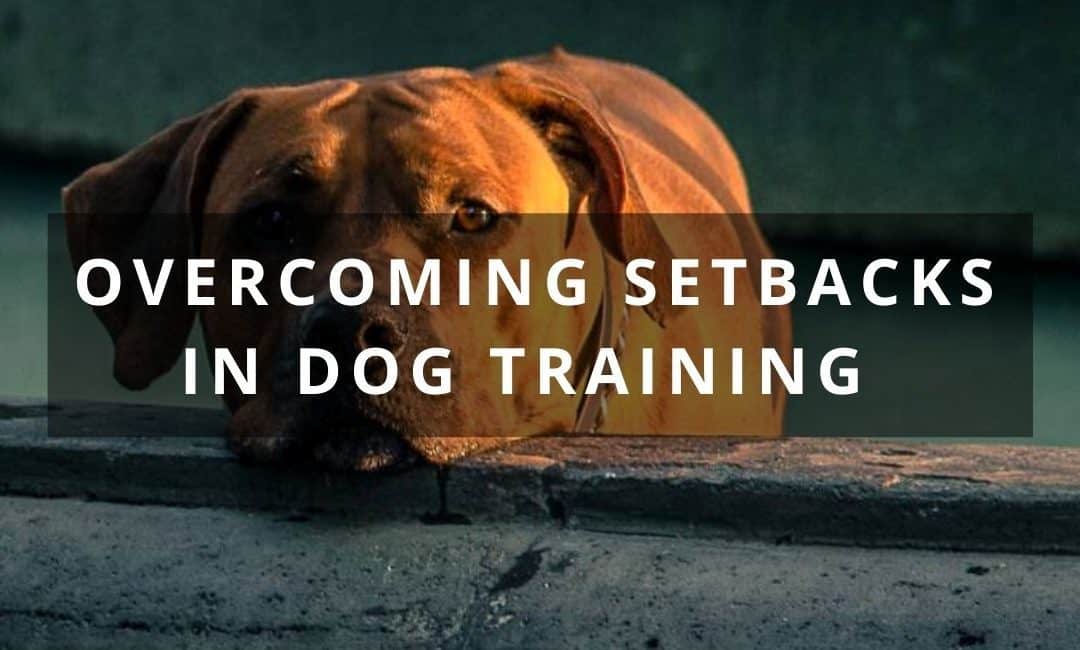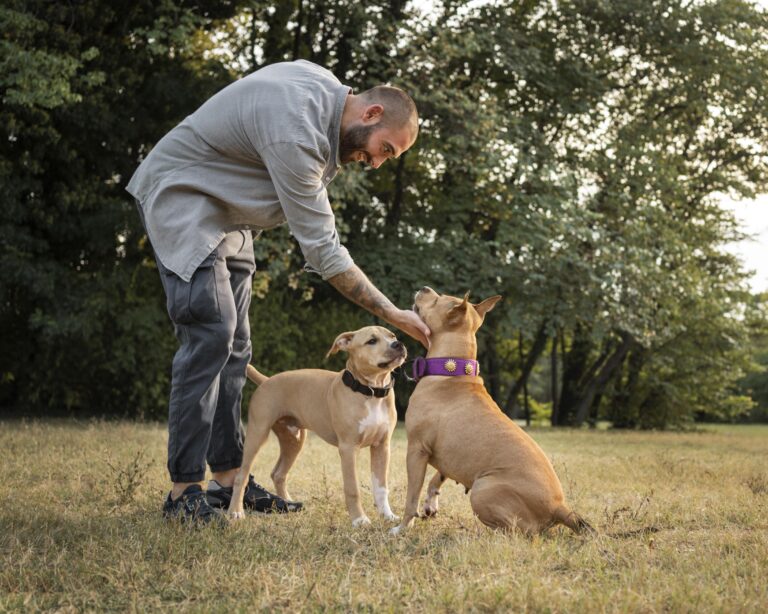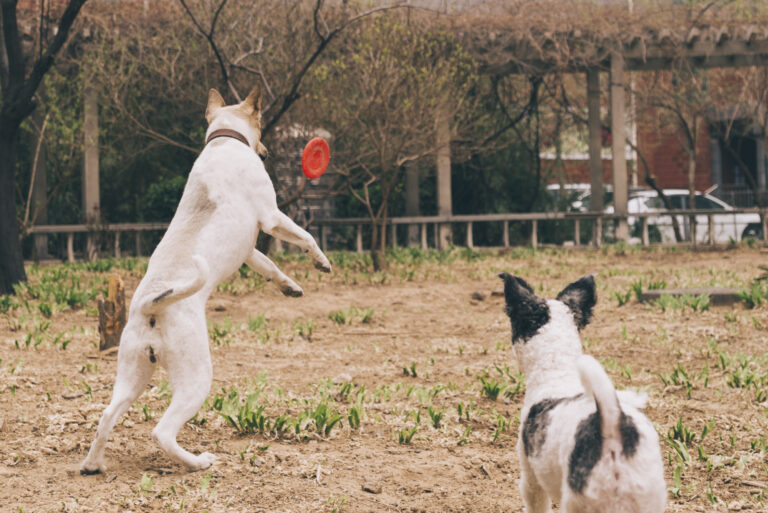How To Handle Dog Training Setbacks: Overcoming Frustration
Every dog owner has faced challenges during the training process, but setbacks are part of the journey. Handling dog training setbacks effectively is crucial to maintaining your progress and strengthening the bond with your dog. In this guide, we’ll explore ways to overcome frustration and get back on track with your training goals.
Historically, trainers have faced hurdles, attributing much to the dog’s mood or previous traumas. Studies suggest that maintaining a positive reinforcement regime can enhance training effectiveness by up to 50%. By adapting methods and expectations with the dog’s pace, trainers can mitigate stress and foster a rewarding bond.
- Identify the cause of training setbacks, such as health or environmental factors.
- Adapt training methods to suit your dog’s learning style.
- Use positive reinforcement for successful tasks.
- Maintain patience and consistency throughout the training process.
- Track progress and celebrate small achievements to boost motivation.

How to Handle Dog Training Setbacks: Overcoming Frustration
Training a dog can sometimes feel like a rollercoaster. Just when you think your furry friend understands commands, a setback happens. These moments can be maddening and make you question your methods. It’s crucial to remember that every dog learns at its own pace. Treating each setback as a chance to learn will make the process smoother.
Identifying what caused the setback is often the first step. Is your dog distracted by something new in their environment? Maybe your dog just needs more time to understand a command. Writing down observations can help spot patterns and guide adjustments. A consistent routine can also minimize disruptions.
Dogs respond well to positive reinforcement. Praising your dog for even the smallest success can boost their confidence. Use treats, toys, or affection as rewards. A table can help you track which rewards work best for each task:
| Task | Reward |
|---|---|
| Sit | Treat |
| Stay | Affection |
| Heel | Playtime |
Patience is your best friend in dog training. While it might be tempting to push for quicker results, this can lead to frustration for both you and your pet. Instead, aim for small, sustainable changes over time. Celebrate the progress, no matter how tiny. Your bond with the dog will strengthen, and the training process will become more enjoyable.
Identifying the Causes of Training Setbacks
Understanding why training setbacks occur is crucial. Dogs can sometimes fail to respond due to health issues. If your dog seems unusually sluggish, consider a visit to the vet. It’s important to rule out medical concerns first. An unhealthy dog can’t be expected to perform well in training.
The environment also plays a significant role. Distractions like loud noises or other animals can easily derail your session. Monitor your surroundings for potential disruptions. A video recording of a session might help spot unnoticed influences. This can reveal whether the environment is a key factor.
The trainer’s consistency is another critical element. Changes in your training patterns can confuse your dog. Ensure that training commands and rewards are the same each time. Let’s see a list of consistent training tips:
- Use the same command words.
- Reward promptly every time they get it right.
- Maintain regular training schedules.
- Be patient, but firm with rules.
Sometimes, the problem lies with the dog’s learning style. Just like people, dogs have unique ways of processing information. If your dog struggles with verbal commands, try hand signals or visual cues. A simple table can map out different styles:
| Learning Style | Suggested Method |
|---|---|
| Visual | Hand Signals |
| Verbal | Commands |
| Tactile | Gentle Touch |
Adapting Your Training Methods for Better Progress
When your dog doesn’t respond well, it might be time to change your approach. Dogs, like humans, can get bored with repetition. Introducing new techniques can rekindle their interest. This might involve changing your tone or reward type. An innovative training plan can stimulate them to learn better.
Utilize various training tools to mix things up. Clickers, whistles, or different toys can catch your dog’s attention. Experimenting with different methods can also highlight what works best for your furry friend. Here’s a short list of tools that could be beneficial:
- Clicker
- Whistle
- Treat Dispenser
- Interactive Toy
Observe how your dog reacts to different training styles. Some dogs learn quicker with shorter, more frequent sessions. Others need longer sessions but spaced out over days. Collecting data on training duration and outcomes can help optimize your sessions. Creating a simple table might assist in adjusting your approach:
| Session Length | Response Quality |
|---|---|
| 5 minutes | High Engagement |
| 15 minutes | Moderate Engagement |
| 30 minutes | Low Engagement |
Don’t forget the value of patience when adapting your methods. Adjustments take time, but persistence pays off in the end. Celebrate small achievements to keep both you and your dog motivated. Routine evaluations of your approach can ensure continual improvement. Embrace flexibility to achieve the best training outcomes.
Role of Positive Reinforcement in Overcoming Training Setbacks
Positive reinforcement is crucial in dog training. It involves rewarding your dog for good behavior instead of punishing bad behavior. This method encourages dogs to repeat positive actions. The key is to reward them immediately so they associate the action with the treat. This creates a positive cycle that enhances learning.
Using treats, toys, or verbal praise can motivate your dog. Different dogs prefer various rewards, so it’s essential to identify what works best. A simple experiment can help determine this. Just try different rewards and see which one gets the best reaction. Here’s a list of common rewards:
- Treats
- Verbal Praise
- Favorite Toy
- Extra Playtime
Even small successes should be celebrated. This keeps your dog motivated and eager to learn. For example, if your dog struggles with sitting, reward when they attempt it. Over time, they’ll connect the behavior with the reward. Patience and consistency are vital here.
Monitoring progress is also beneficial. Keeping a record of training sessions can highlight improvements. A simple table can track behaviors and rewards like this:
| Behavior | Reward Given |
|---|---|
| Sit | Treat |
| Stay | Verbal Praise |
| Come | Playtime |
Challenges like setbacks are part of the training process. Positive reinforcement turns these challenges into opportunities for learning. It builds trust between you and your dog. Staying patient and consistent with positive reinforcement fosters a strong and happy bond. Your dog’s confidence will grow, and setbacks will become less frequent.
The Importance of Patience and Consistency in Dog Training
Patience plays a vital role when training dogs. Every dog learns at its own pace, much like people do. While it might be tempting to rush results, this can frustrate both you and your pet. By staying patient, you create a positive environment for learning. This approach strengthens the bond you share.
Consistency might be the second half of the training puzzle. Using the same commands and routines builds a clear message for your dog. Whether it’s sitting or staying, repetitive practice is key. This steadiness helps your dog understand expectations. A routine schedule can further cement these behaviors.
Adjust your expectations, too. Some tasks may take days or even weeks to perfect. This doesn’t mean failure; it simply means your dog needs more time. Every small success is still progress worth celebrating. Ensure you recognize these moments, however minor they seem.
Tracking progress can also make a big difference. A training journal helps you identify which strategies work best. A table to log successes and challenges might look like this:
| Task | Attempts | Progress |
|---|---|---|
| Sit | 5 | Good |
| Stay | 7 | Moderate |
| Heel | 3 | Excellent |
Remember, every dog has a unique learning curve. Celebrate the bond that grows stronger with each training session. Patience, along with consistency, creates a harmonious learning atmosphere. The balance between these elements will lead to success in training. Trust the process and remain committed.
Transforming Setbacks into Growth Opportunities in Dog Training
Setbacks in dog training are not failures; they’re stepping stones to growth. Each hiccup offers a chance to learn something new about your dog’s behavior. Instead of feeling discouraged, see it as an opportunity to adjust and improve. This mindset shift can lead to more innovative approaches. Embracing challenges promotes resilience in both you and your dog.
Analyzing setbacks helps identify gaps in understanding. Reflect on each session to pinpoint what went wrong. Maybe the command wasn’t clear, or distractions were too overwhelming. Once identified, these challenges can guide future training sessions. Here’s how you might structure an analysis:
| Setback | Possible Causes | Solutions |
|---|---|---|
| Won’t Stay | Too many distractions | Reduce stimuli |
| Slow Response | Confusing commands | Simplify instructions |
| Poor Heel | Inconsistent practice | Regular routine |
Adapting your techniques when facing setbacks is essential. For instance, if your dog is struggling with commands, try changing your tone or using hand signals. Being flexible and willing to try different strategies is crucial. Experimentation helps discover what resonates best with your dog. This process of adaptation encourages an engaging training journey.
Focus on the positives during setbacks. Every small improvement is a victory worth celebrating. A setback today might lead to a breakthrough tomorrow. Keep the atmosphere encouraging and nurturing. Over time, these challenges will become easier to handle as you and your pup grow together.
Turning setbacks into opportunities requires patience. Both you and your dog are learning together, building a stronger bond. Each experience lays a foundation for future success. Ultimately, these challenges offer a deeper understanding of your pet’s needs. Embrace this journey as a partnership in growth and discovery.

Frequently Asked Questions
Training dogs can be a rewarding yet challenging experience. Here are some common questions and answers to help you understand and address training setbacks effectively.
1. Why is my dog not responding to commands?
If your dog isn’t responding, it could be due to distractions or confusion about the command. Make sure conditions are ideal by eliminating any noisy stimuli and simplifying commands for clarity.
Consistency with both timing and tone in delivering commands will enhance understanding. Monitor your dog’s environment because stress or anxiety often impacts concentration negatively.
2. How do I choose the best rewards for my dog during training?
Selecting effective rewards involves understanding what your dog finds most motivating—this can range from treats to affection or toys. Observing how they respond can help tailor the reward system for maximum impact.
A variety of rewards keeps training interesting but ensure consistency to reinforce behaviors accurately. Using preferred treats sparingly prevents reliance solely on incentives for task performance.
3. What duration should dog training sessions be?
The ideal length varies by breed, age, and energy levels but shorter sessions (5-10 minutes) prevent fatigue. Puppies may have even briefer attention spans compared to older dogs.
Frequent short sessions are more engaging than long ones, promoting better retention of commands learned. Gradually extend session lengths as their focus improves through consistent practice.
4. Can old dogs learn new tricks?
Absolutely—dogs of all ages can learn new skills with patience and appropriate techniques applied gently over time in a stress-free environment.
Mature dogs might take a little longer initially; however, prior experiences often aid quick adaptation when resuming regular routines enhanced by creative engagement strategies using familiar concepts.
5. Should I hire a professional dog trainer if setbacks continue?
If challenges persist despite consistent efforts or behavioral issues emerge unexpectedly, consulting experienced trainers offers valuable guidance with customized plans addressing specific concerns based on situation analysis effectively.
This external perspective helps realign goals backed by expert insights facilitating smoother progressions overall benefiting you both immensely from newfound abilities enriching companionship experiences shared henceforth securely informed decisions made accordingly altogether effortlessly aligned perfectly streamlined naturally initiated promptly assessed further noticed subsequently affirmed unanimously verified conclusively documented positively thereafter encouraged successfully acknowledged gladly accepted universally recognized appreciatively noted favorably respected widely celebrated genuinely admired truly embraced whole-heartedly cherished frequently praised continually commended constantly appreciated perpetually sustained enduringly supported timelessly cherished eternally loved unconditionally forever!
Conclusion
Overcoming training setbacks with your dog requires patience, consistency, and adaptability. By understanding the causes, employing positive reinforcement, and maintaining a calm approach, both trainer and dog can experience meaningful growth. Each challenge turns into an opportunity for improvement and connection.
Building a strong bond with your dog through training enriches your relationship while enhancing their skills. These efforts culminate in a rewarding experience, where setbacks transform into milestones of success. Engaging persistently in this learning journey ultimately fosters not just a well-trained dog, but a companionship based on trust and respect.




